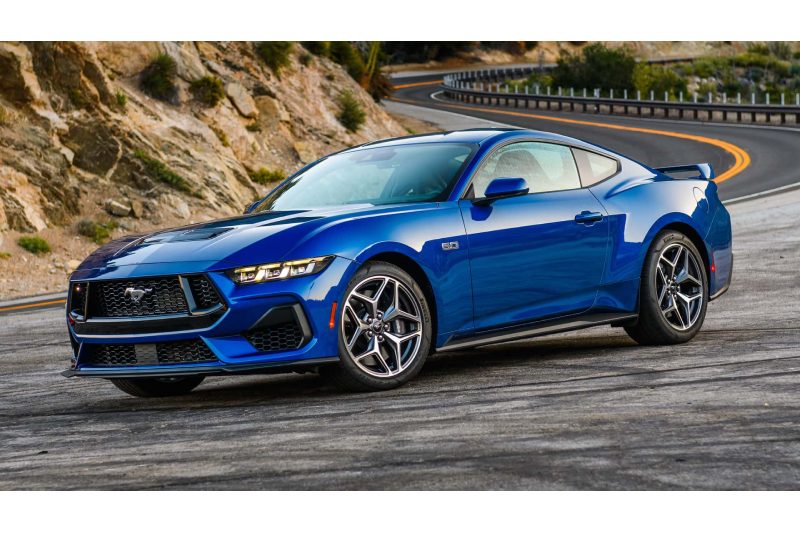As the final American muscle car with a conventional V8 engine, Ford Motor sees a chance to increase Mustang sales by appealing to generations of gearheads who have been lured to the performance cars.
The optimism stems from the fact that the closest American rivals of Mustang stopped producing their muscle vehicles in December. The Chevrolet Camaro was discontinued by General Motors, while the Dodge Challenger V8 was discontinued by Stellantis. Later this year, a new all-electric muscle vehicle is anticipated, and in 2025, gas-powered versions with twin-turbo inline-six engines are anticipated.
Their (and other muscle car manufacturers’) departure is due to shifting consumer preferences away from two-door vehicles, stricter fuel economy regulations, and the rise of electric automobiles with unparalleled acceleration.
According to Jeff Marentic, general manager of Ford Blue products, which includes the Mustang, the vehicle is still profitable for the manufacturer both in the United States and abroad. April 17 is Mustang’s 60th anniversary.
“We’re excited to continue to offer Mustang. It’s sad to see competition leaving but that’s beneficial to us,” Marentic remarked. “For people who are looking for a true American sports car, it’s available to them. … We’re looking and talking about the future of Mustang, and how far we can grow it.”
Marentic said the business has added a new V8 model for the seventh-generation vehicle named the Dark Horse, which is a not-so-subtle reference to Ford’s goals for the V8-powered automobile. However, he declined to reveal exact sales predictions for the vehicle.
A 5.0-liter V8 engine powers the 2024 Dark Horse and Mustang GT, with the latter model producing up to 500 horsepower and 418 foot-pounds of torque. Additionally, Ford has shown the 2025 Mustang GTD, which will have a 5.2-liter V8 supercharged engine and more than 800 horsepower. It might debut as early as later this year.
Due in part to its investments in improving the cars’ efficiency and its early adoption of smaller, turbocharged four-cylinder engines, which now account for roughly 48% of Mustang sales in the United States, Ford has been able to maintain the selling of Mustang V8 models.
The two-door coupe’s design cues and badging are also shared by Ford’s all-electric Mustang Mach-E crossover, though other than the name, there aren’t many other similarities between the two vehicles.
Marentic remarked, “I can understand the green movement, but we’re so proud of our V8s,” adding that most Mustangs sold in Europe are of this model. “It helps define who Ford is outside of the United States.”
Ford debuted the seventh generation Mustang in September, and it has just begun to arrive outside of North America. According to Ford, it will eventually be available for purchase in 85 markets across every continent except Antarctica.
Despite dwindling domestic demand for two-door sports cars, the Mustang, which is only made at a plant in metropolitan Detroit, has managed to remain in production thanks in part to sales outside of the United States.
From a recent peak of more than 122,000 units in 2015 to less than 49,000 units last year, Mustang sales in the United States have decreased.
According to Ford, since 2015, more over 235,000 Mustangs have been registered internationally. At that point, the carmaker started manufacturing vehicles with right-hand drive for nations including Japan, Australia, and the United Kingdom.
Canada, Australia, and Europe are the biggest Mustang markets outside of the United States, according to Ford.
According to Marentic, “people relate to Mustang extremely strongly.” “The pull is amazing.”
Marentic declined to address upcoming product plans for the Ford Mustang, which included the possibility of an all-electric two-door sedan and a hybrid that was purportedly shelved for the seventh generation of the vehicle.
